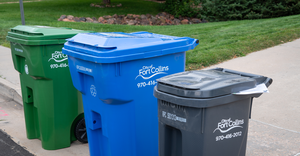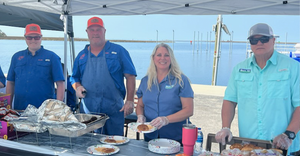Episode 94: Innovating with Bottle-to-Bottle Recycling
February 8, 2021
In the latest episode of NothingWasted!, we chat with Leon Farahnik, CEO of CarbonLITE Recycling. CarbonLITE is based on the philosophy of bottle-to-bottle, closed-loop recycling and is the largest producer of food-grade post-consumer recycled PET in the world.
The CarbonLITE system converts used plastic bottles made of PET back into plastic resin, which is then used to create entirely new bottles.
We spoke with Farahnik about his journey that started in the plastic-bag business and eventually led him to become a recycling entrepreneur, the impact of the pandemic on his business, and more.
Here’s a sneak peek into the discussion:
Waste360: How does the CarbonLITE system work?
Farahnik: Our recycling is a mechanical process where we take PET bottles and wash them completely; then it goes through a grinding system and is again washed; that material then goes into special equipment to make it food-grade, pelletized, and to make the resin that is sold to major beverage companies to make new bottles all over again. Our specialty is in PET, which is one of the most used materials in the world. Approximately 100 billion pounds of it are used in the world every year, 30% of which ends up as packaging. The good thing about it is that the bottles are collected by MRFs and separated — so we can buy that material and transform it for use again.
Waste360: Can you tell us about your new plant in Pennsylvania — and are you seeing an increased demand for the materials you are making?
Farahnik: We have three plants — one in California, one in Texas, and our most advanced plant is just starting up in Pennsylvania. It’s a very sophisticated plant, and we have robots helping with certain tasks. Across our three sites, we will be using more than 1 million used materials a day. And yes, there is increased demand; we are sold out across all of our facilities.
Waste360: It’s great to see some of the larger beverage companies working with partners to raise recycling rates. What are you observing in this area?
Farahnik: In the U.S., unfortunately we only collect around 30% of all used bottles, with 70% ending up in landfills and waterways. This 30% collection is not acceptable. I would consider it a disaster, especially compared to Europe. Interestingly, in Oregon, they increased their bottle rebate to 10 cents — and all of a sudden their collection rate went from somewhere around 70% to over 90%. So it’s only a matter of incentives and giving people money to do the things that are the right things. In Germany, the bottle deposit is over 30 cents, and because it’s so expensive, people always bring it back. People are just not as incentivized here.
Waste360: What else do you think needs to be done?
Farahnik: We need billions of dollars of investment. And we have to make sure recycling is a profitable business. Unfortunately now it’s not. It’s a very tough business. Recycling needs all the brand owners and people who use packaging to make sure that…there should be more recyclers in the market, and for the stakeholders to help them financially to build more plants. With more competition, you have more of all good things, and prices can be more competitive with the virgin materials in the market. It has to go hand in hand.
#NothingWastedPodcast
You May Also Like


